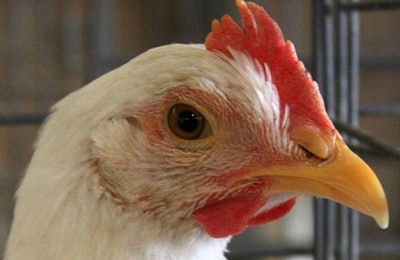
In West Africa, Mali has registered the country’s first cases of H5N1 highly pathogenic avian influenza (HPAI) in poultry.
According to the official report from the veterinary authority to the World Organisation for Animal Health (OIE), there were three outbreaks last month, all in western regions.
First to be affected was a backyard flock of 150 birds in the capital city region of Bamako. Within 10 days, further outbreaks were confirmed among commercial egg flocks in neighboring regions of Koulikoro and Sikasso. In total, 50,150 poultry were directly impacted by these outbreaks.
At the end of 2020, one HPAI outbreak linked to the same virus variant was reported at a farm in Senegal, which borders Mali to the west. No further cases in the country emerged, according to the Senegalese Press Agency in February.
Impacts of HPAI confirmed on one South African farm
Last week, South Africa’s animal health agency officially reported a new outbreak of HPAI to the OIE.
According to the report, the presence of the HPAI virus variant was confirmed at a poultry farm after around 300 birds had died in the first week of April. With a flock of 29,000 birds, the affected premises was a commercial farm in the Ekurhuleni city municipality of Gauteng province. It is near to the country’s largest city, Johannesburg.
Once the virus involved was identified as highly pathogenic, the outbreak was described by Cape Talk as a threat to South Africa’s poultry industry.
The same farm in Ekurhuleni was infected with the H5N8 HPAI virus when that strain caused a series of outbreaks in South Africa in 2017, according to Business Insider.
Lessons learned from 2017 outbreak
During the 2017 HPAI outbreak, the South African egg industry was hit hard, particularly in Western Cape Province, according to the South African Poultry Association (SAPA). Around 20% of the nation’s laying hens — 4.7 million birds — were culled at that time, leading to a nationwide shortage of 20-50%. However, lessons were learned by the poultry sector from that experience, with many companies steeping up biosecurity procedures.
There is no risk of shortages this time, said SAPA.
HPAI is 'trade-sensitive'
Exports are key to the success of South Africa’s poultry companies. Key markets are the South African Development Community and its neighboring states. In 2019, total poultry exports amounted to more than 53,600 metric tons (mt), comprising 94% chicken meat, according to Business Insider.
Within South Africa are avian flu-free compartments, and the nation will be working hard to reassure potential trade destinations that poultry products from these areas are safe and disease-free.
However, as soon as the outbreak in Gauteng was confirmed, Reuters reported that agriculture ministry in Botswana had banned all poultry trade with South Africa.
Within days, other countries had made similar moves. Namibia introduced a retrospective ban on South African poultry products from March 19, reports New Era Live, although imports and transit of products from HPAI-free compartments can continue.
According to the latest report from Business Insider, Mozambique has turned back “truck-loads” of South African eggs at the shared border. This could have a major impact on both markets as 70% of South African egg exports — almost 10,700mt last year — as well as 12,800mt of chicken meat are delivered to Mozambique each year.
Zimbabwe steps up avian flu surveillance
Following confirmation of the outbreak in South Africa, the nation’s other neighbor — Zimbabwe — announced additional disease-prevention measures. According to Chronicle, these include increased surveillance. This will help to address the main threats, which are migratory birds and illegal poultry trade, said the director of the veterinary authority. Furthermore, border controls will be steeped up, and an awareness campaign will be rolled out to remind poultry owners to report any illness or mortality to a veterinarian, and to provide feed and poultry to their own birds so these cannot be accessed by wild species.
According to this source, there was just one HPAI outbreak in Zimbabwe in 2017, and the disease was resolved by the end of that year.
South African wild bird mortality not linked to avian flu
Recent mass mortalities of wild birds in Eastern Cape were not linked to avian flu, according to the Department of Agriculture, Land Reform and Rural Development.
In the past week, the national veterinary authority has confirmed to the OIE that there have been no new cases of low-pathogenic avian influenza linked to the H7 subgroup. This strain was first detected in commercial ostriches in Western Cape in August of last year. Since then 410 birds of the almost 23,000 tested have produced a positive result. The most recent cases were identified in early February this year.
Elsewhere in Africa, HPAI outbreaks were confirmed in Nigeria and Algeria earlier this month.
View our continuing coverage of the global avian influenza situation.
















